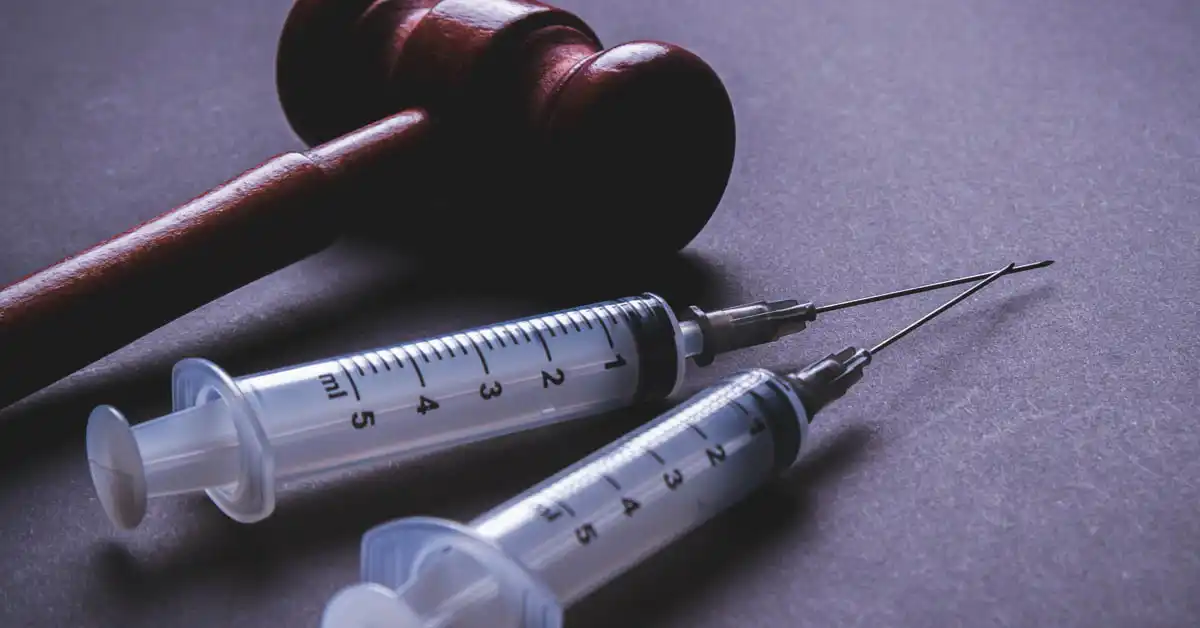Blog Series: The Journey through Vaccine Injury
- First Signs: Recognizing Vaccine Injury Symptoms
- Documenting Your Vaccine Injury: A Critical Step for Your Case
- When to Suspect SIRVA: Understanding Vaccine-Related Shoulder Injuries
- Guillain-Barré Syndrome after Vaccination: Understanding Vaccine-Related GBS
- Navigating the Healthcare System with a Vaccine Injury
- Why and When to Contact a Vaccine Injury Attorney
- What to Expect in the Vaccine Injury Compensation Program
The Vaccine Injury Compensation Program (VICP) is a unique Court under the jurisdiction of the United States Court of Federal Claims that is designed specifically to handle vaccine injury claims. Understanding how this program works helps set realistic expectations and prepare for the journey ahead for petitioners in the VICP.
Understanding the VICP Process
The VICP differs significantly from traditional legal proceedings, as it follows its own specific procedures and rules. This specialized program, established by the National Childhood Vaccine Injury Act, provides a no-fault system for addressing vaccine injury claims. Understanding its structure helps explain how claims progress from filing to resolution.
Key process elements include:
- Initial claim filing
- HHS review
- Medical record evaluation
- Expert opinion gathering
- Settlement discussions
- Court proceedings
- Compensation decisions
Filing Requirements
Filing an initial claim in the VICP requires attention to specific program requirements. The Vaccine Court maintains strict guidelines about what evidence must be included with claims and how they must be presented. Meeting these requirements and retaining a vaccine-injury attorney to help navigate you through the process helps to ensure that the Court gives your claim the attention it deserves.
Essential filing elements:
- Complete medical records
- Vaccination documentation
- Injury evidence
- Expert support
- Timeline details
- Financial documentation
- Treatment records
Program Timelines
The VICP process follows specific timelines, which affect how vaccine-injury claims progress through the Court’s docket. Understanding the Court’s and respondent’s timeframes help set realistic expectations for timing of claim resolution. Every vaccine-injury case is different, but knowing the Court’s typical timeframes for given phases in a case helps aid vaccine injury petitioners with planning and preparation.
Timeline considerations include:
- Filing deadlines
- Government response periods
- Evidence submission windows
- Hearing schedules
- Settlement timeframes
- Decision processes
- Appeal periods
Types of Compensation
The VICP provides various forms of compensation depending on the circumstances and impact of a vaccine injury. Different types of compensation include pain and suffering damages, out-of-pocket expenses, lost wages, and reimbursement for Medicaid liens. It is important to understand the different claims associated with your vaccine injury so that you receive full compensation. This knowledge aids in preparing documentation and obtaining evidence to support compensation requests.
Compensation may include:
- Medical expenses
- Lost earnings
- Pain and suffering
- Future care costs
- Death benefits
- Attorney fees
- Out-of-pocket expenses
- Reimbursement of Medicaid liens
Evidence Requirements
Successfully navigating the VICP requires petitioners to present proper evidence to support their claims. It is important to understand what types of evidence are necessary, to ensure thorough documentation and successful execution of your vaccine injury claim.
Important evidence includes:
- Medical diagnoses
- Treatment records
- Expert opinions
- Financial documentation
- Impact statements
- Witness testimony
- Supporting research
Role of Medical Experts
Medical experts play a crucial role in VICP claims. Their involvement helps petitioners establish causation between their vaccination and resulting vaccine injury.
Expert contributions include:
- Injury evaluation
- Causation analysis
- Treatment reviews
- Future needs assessment
- Report preparation
- Testimony provision
- Record review
Settlement Considerations
Many VICP claims are resolved through informal settlement negotiations rather than by a court decision. Understanding the settlement process helps petitioners prepare for potential negotiations, evaluate offers, and make informed settlement decisions.
Settlement factors include:
- Injury severity
- Evidence strength
- Future needs
- Compensation scope
- Timeline impact
- Resolution certainty
- Appeal rights
Court Proceedings
If informal settlement negotiations fail, then the parties typically move forward with litigating the issue of entitlement. VICP-specific procedures guide the process after a vaccine claim proceeds to litigation. Understanding VICP requirements helps prepare petitioners for potential hearings.
Court elements include:
- Hearing procedures
- Evidence presentation
- Witness testimony
- Expert involvement
- Decision process
- Appeal rights
- Timeline expectations
After Decision Support
After the Court enters a decision regarding a vaccine injury claim, the next move will depend on the outcome of a given petitioner’s claim. Understanding what happens after Court decisions helps petitioners prepare for next steps before the Court rules on their case. This knowledge aids claimants in planning for both favorable and unfavorable Court outcomes.
Important considerations:
- Award distribution
- Future medical care
- Ongoing support
- Appeal options
- Implementation timeline
- Tax implications
- Future modifications
Looking Forward
Successfully navigating the VICP requires understanding, patience, and proper preparation. While the process can seem complex and daunting, knowing what to expect helps guide decisions and fosters peace of mind. Working with experienced legal and medical professionals throughout the process helps ensure that your vaccine injury claim is handled successfully.
Key success factors:
- Proper documentation
- Timeline compliance
- Expert support
- Clear communication
- Patience understanding
- Professional guidance
- Thorough preparation
Remember that while the VICP process can take time, it provides a specialized system for addressing vaccine injuries. Understanding how the program works helps create realistic expectations for petitioners, and helps them in preparing and presenting their vaccine injury claim.
This concludes our comprehensive series on vaccine injury recognition, documentation, and compensation.

